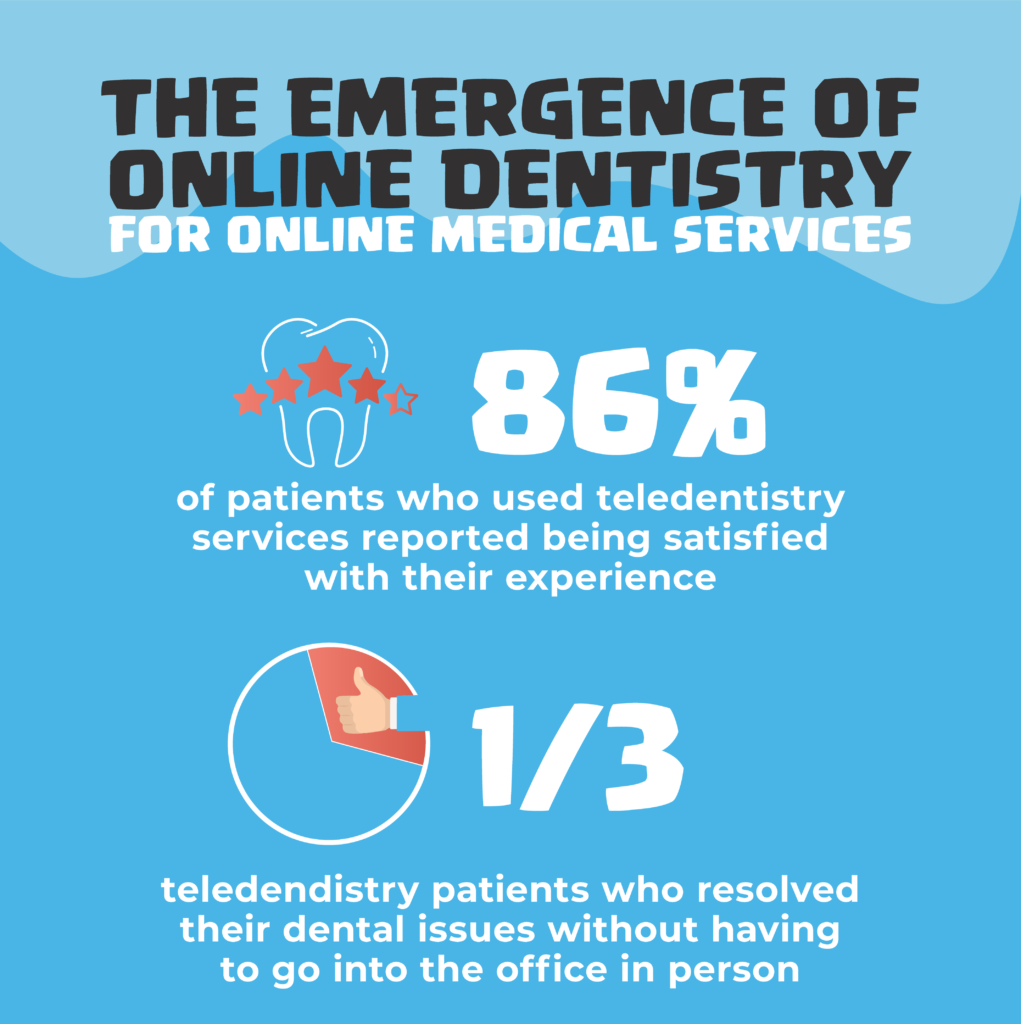
Not so long ago, seeing a dentist online seemed more in line with science fiction than actual clinical practice. Today, telemedicine is widespread and widely popular among patients and providers.
In fact, 86% of patients who used teledentistry services reported being satisfied with their experience, according to a study by nonprofit organization DentaQuest Partnership for Oral Health Advancement. Further, almost a third of teledentistry patients resolved their dental issues without having to go into the office in person.
Four in ten dentists reported either using teledentistry or planning to start providing online dental services in the near future as of May 2020, another DentaQuest Partnership for Oral Health Advancement survey reported.
What Is Online Dentistry?
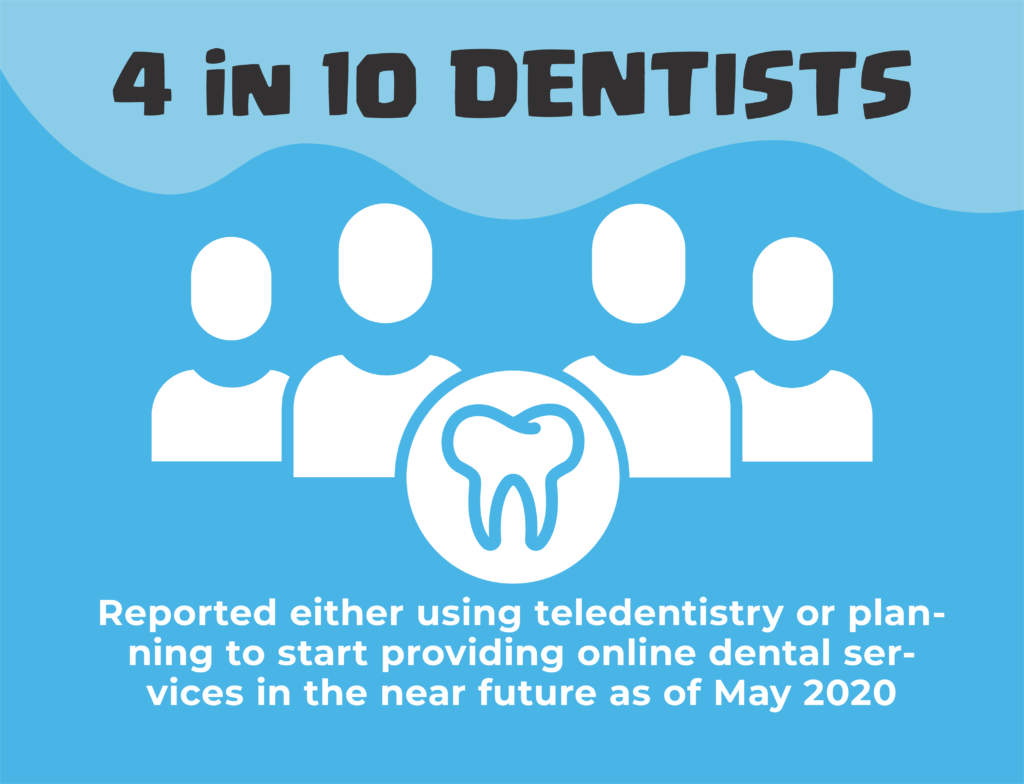
Online dentistry refers to dental and oral health services provided remotely, outside of the traditional in-office dental consultation. Online dentistry also goes by the terms digital dentistry and virtual dentistry and is part of teledentistry, an aspect of telehealth.
Most online dentistry services involve the use of a computer, tablet, or mobile phone connected to the internet, as well as a camera (usually integrated into the tablet or phone) to take still photos and a webcam or video call functionality. Some teledentistry visits may use a traditional phone call instead of a video call.
The COVID-19 pandemic played a role in advancing the prevalence of telehealth services. Rates of virtual medical office visits and outpatient care were 78 times higher in April 2020 than they were in February 2020, management consulting firm McKinsey & Company reported.
However, data suggests that telemedicine, including teledentistry, is here to stay. Through the first months of 2021, the rate of telehealth visits stabilized at 38 times what they were pre-pandemic, according to McKinsey & Company. Most providers expressed an interest in continuing to provide patient care virtually.
As of February 2021, McKinsey & Company reported that telehealth visits accounted for 8% of outpatient and office visits in the dental and oral health specialty. Adoption of teledentistry has been slower and less prevalent than many other specialties, including psychiatry, substance use disorder treatment, gastroenterology, neurological medicine, and infectious diseases.
It’s actually surprising that more patients aren’t taking advantage of teledentistry, considering how many benefits online dentistry offers and how well it addresses the obstacles that keep people from receiving dental care.
The Benefits of Digital Dentistry
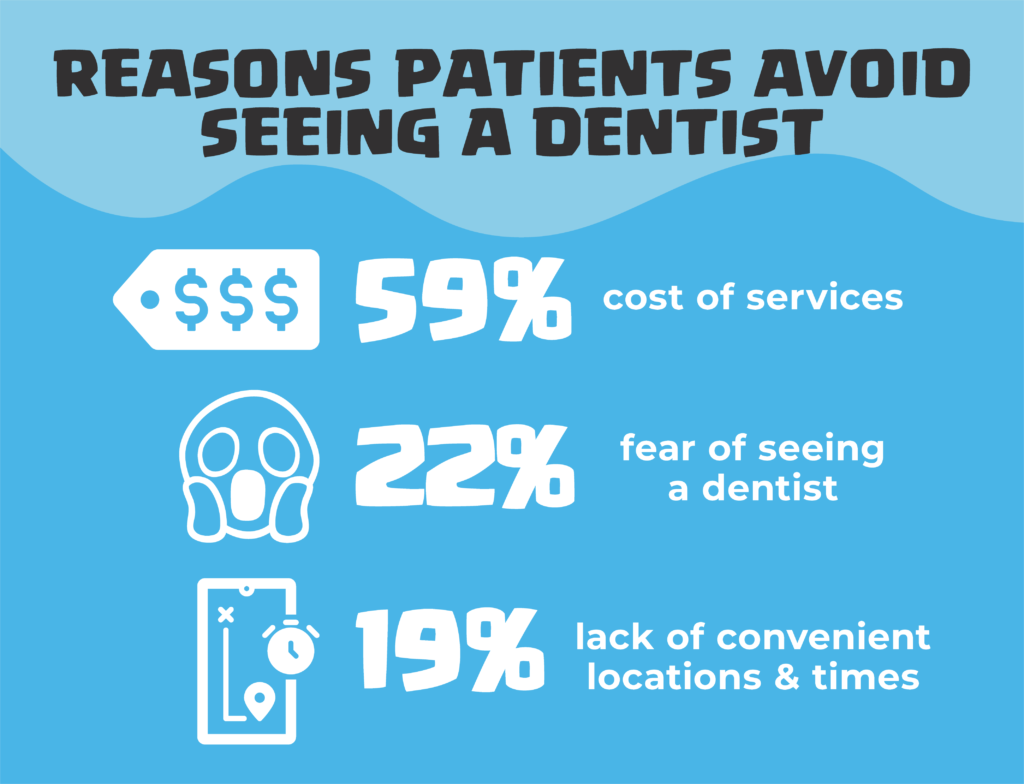
Online dentistry has distinct advances over in-person dental consultations:
- Affordability
- Efficiency
- Convenience
- Comfort
Online dentistry solves the problems that keep many people from going to the dentist in the first place. The American Dental Association reported the following reasons patients avoid seeing a dentist:
- Cost—59%
- Fear—22%
- Lack of convenient locations and times—19%
Teledentistry can cut the cost of a consultation appointment while providing dental care on-demand, in the time and place of the patient’s choosing. Of course, virtual dental exams don’t hurt, so dentist-averse patients are more willing to address the health of their teeth and gums with online dentistry.
In the majority of cases, teledentistry is an effective and accurate method of making a clinical diagnosis. The diagnoses made through telehealth dentist appointments were accurate to those made in traditional dental clinics 72.4% of the time, researchers at Boston University found.
How Does Online Dentistry Work?
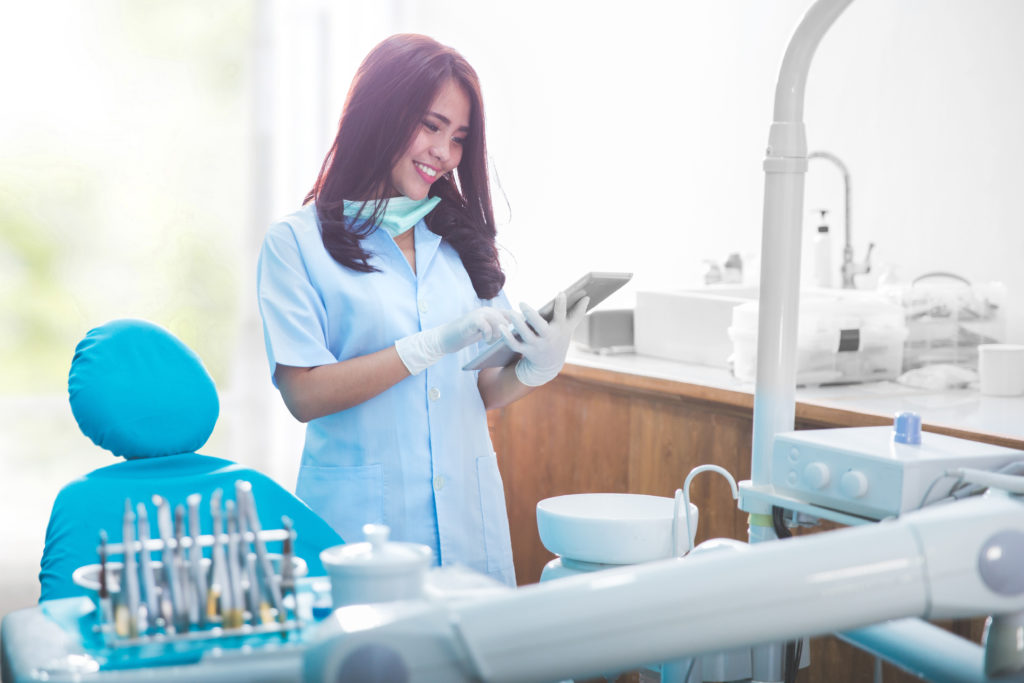
Patients might be skeptical about the limitations of digital dentistry. It’s true that a dentist can’t fill a cavity, extract a tooth, perform a root canal, or clean plaque from your teeth over a computer or a mobile device. In-person visits to a dental clinic are still important. However, digital dentistry is a valuable tool, especially for diagnosing dental problems and coming up with treatment plans.
When Should You See a Dentist Online?
In some instances, online dental appointments are conducted as a follow-up to dental surgery, such as a wisdom tooth extraction. Teledentistry is also useful for patients who have an urgent dental problem and can’t wait weeks to be seen in a traditional dentist’s office.
Some patients use online dentistry services to get information and make decisions about dental procedures, such as teeth whitening and straightening interventions. Perhaps you don’t know the difference between crowns and veneers, or you’re not sure whether braces or clear aligners are the best choice for you. A virtual dental consultation would allow you to discuss the options with a licensed dentist.
What It’s Like to See a Dentist Virtually
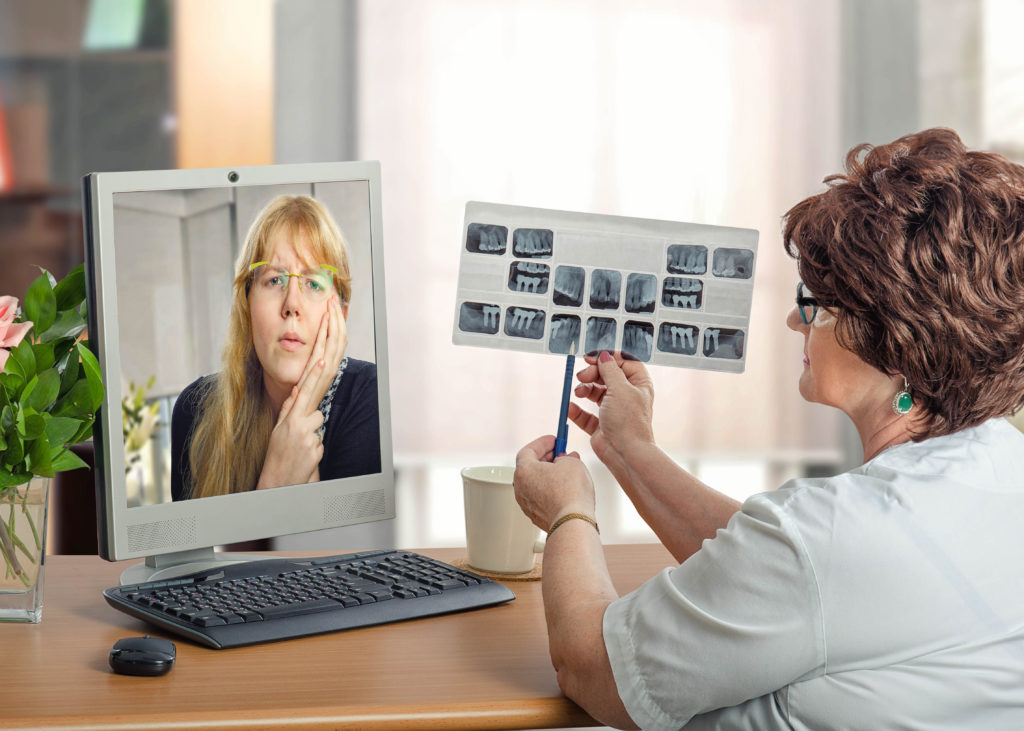
To start off teledentistry services, a patient will often use a cell phone camera to take photos of dental problems. Through text, email, or a dental app on a smartphone or tablet, the patient shares these photos with a fully licensed dentist. Ideally, these photos replace the in-person exam the patient would receive in a dentist’s office or clinic.
The patient then has a phone or video call with the dentist to discuss their symptoms and treatment. Through teledentistry, the dentist has the opportunity to ask all of the same questions they might ask in the office. These questions may include how long the problem has existed, the type and level of pain it causes, and questions about risk factors for dental ailments.
Often, between the photos of the problem and the consultation with the patient, a dentist can reach a diagnosis and formulate a treatment plan.
Treatment From an Online Dentist
In some cases, a telehealth dental examination may reveal a problem that requires the patient to come into the office for a procedure. While patients may have hoped to solve their dental problems completely remotely, it isn’t always possible when a procedure is warranted. In this instance, the original online dental appointment at least removed the burden of making multiple office visits for the same problem.
If a dental procedure isn’t required, the dentist may be able to treat the patient without bringing them into a physical office. Licensed dentists can provide advice for using over-the-counter measures for treating mild and temporary dental problems, like routine but painful mouth sores or mild tooth sensitivity.
An online dental consultation may be sufficient for dentists to recommend a bite guard to patients with sore jaws attributed to temporomandibular joint (TMJ) dysfunction from grinding their teeth at night. If you complain of tooth sensitivity and your virtual exam suggests that the cause is erosion of the enamel, rather than a more serious condition like an abscess, the dentist you see online might recommend special over-the-counter toothpaste and mouthwash products to help restore eroding enamel.
Through virtual dentistry services, a dentist may even prescribe medications, such as antibiotics, antibacterial rinses, anti-inflammatory medications, dental anesthetics, and non-narcotic pain relievers.
Standout New Technologies in Online Dentistry
The Tooth Fairy App
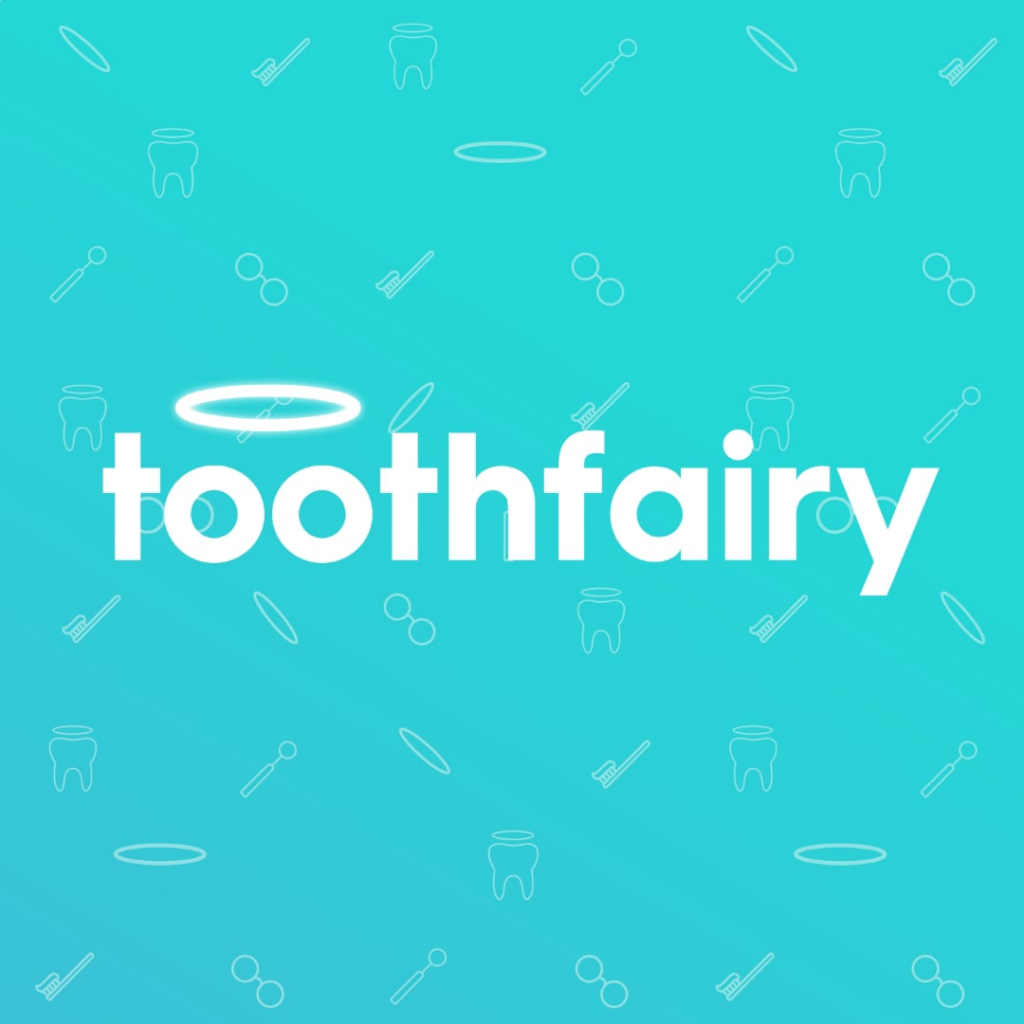
So popular in the United Kingdom that it has earned a 91% approval rating among patients in the National Health Service, the award-winning Tooth Fairy App is ideal for patients seeking a healthier and more attractive smile. The monthly plans include clear aligners to straighten teeth and whitening services, all under the guidance of a fully qualified dentist.
Patients using the Tooth Fairy app go into the clinic for a full in-person dental exam and to have professional-quality dental impressions taken so that their aligners fit correctly. Digital dentistry technology is used to monitor patients through online video consultations with their supervising dentist throughout their teeth straightening treatments.
The Tooth Fairy app also offers dental emergency telehealth appointments and general dental advice at a flat per-visit fee.
Toothpic

There are plenty of teledentistry tech companies on this side of the pond, too. One option is Toothpic, a digital dental service that accepts insurance and connects patients to dentists in 50 states, 24 hours a day. You could be chatting with a dentist in minutes, paying as little as $10 for a non-urgent single issue or $35 for an emergency virtual visit, as of August 2021.
As the company’s name suggests, the pics are important. Toothpic guides users through the process of taking just the right photos for their dentist to effectively evaluate the problem.
Denteractive

Denteractive is another exceptional technology for teledentistry that provides 24-hour access to qualified dental professionals. In addition to general and cosmetic dentists, you will find specialists in endodontics and orthodontics on the provider team at Denteractive.
Live Dentist

Live Dentist offers instant access to virtual dental care 24/7, and it’s a great choice for patients who fear that their issue may require an in-person procedure. Built into the service is electronic prescription functionality to provide immediate relief and treat urgent problems. If the dentist you see in a virtual appointment determines that your condition necessitates treatment in a dental office, they can refer you to local providers, including specialists.
The TeleDentists

The TeleDentists handle just about any type of dental trouble, from tooth sensitivity and inflammation to implants, abnormal lesions, orthodontics, and teeth whitening. The service offers assistance with pediatric dental matters for the kids, as well as general dentistry, cosmetic dentistry, and emergency dental work for adults.
Conclusion
If you have been putting off going to the dentist for a consultation, or if an urgent issue has come up and you can’t wait for an appointment, online dentistry is an excellent option to consider. More teledentistry services offer appointments than ever before, and dental offices are increasingly offering virtual appointments, as well. Digital dental appointments are affordable, convenient, and put you on the path to feeling better in minutes.
Related:
